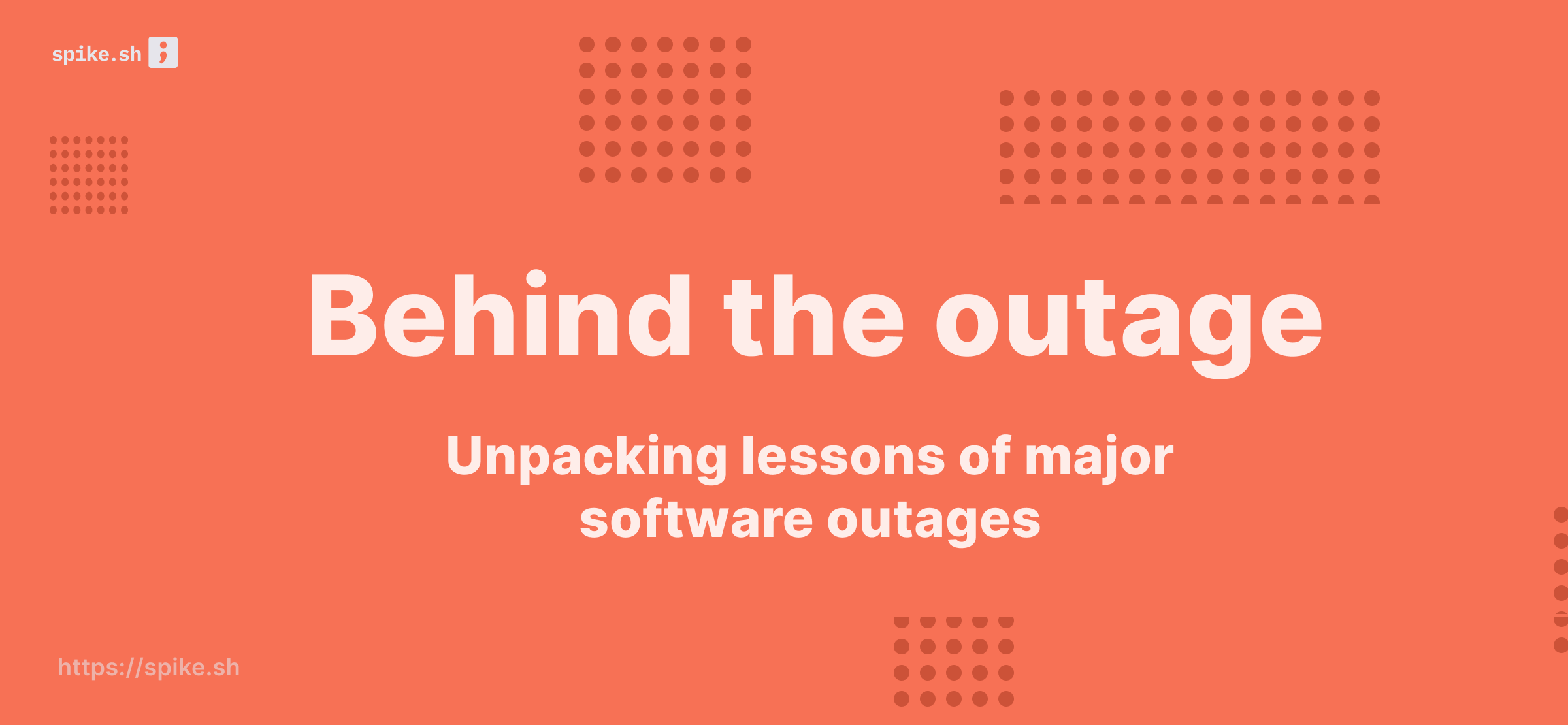Incident management is a critical sphere in software where learning from the past is not just beneficial; it's crucial for future success.
Think of it this way: when we dissect past incidents, we're not just revisiting old problems. We're on a journey of discovery, identifying patterns, and pinpointing weaknesses to dodge future mishaps.
In this post, we’ll dive into four major incidents, not just for the stories they tell but for the invaluable lessons they impart.
1. Cloudflare's Unexpected Downtime
On July 2, 2019, Cloudflare faced a major outage. A new rule in their Web Application Firewall (WAF) Managed Rules triggered CPU exhaustion, crippling HTTP/HTTPS traffic handling.
This led to widespread 502 errors for Cloudflare's customers, knocking out essential services like proxying, CDN, and WAF.
As the system began to falter, Cloudflare's monitoring systems, sent out alerts to the relevant teams.
Cloudflare's team responded promptly, identifying and disabling the problematic rule using a global kill switch.
This incident highlighted the critical need for effective monitoring and alert systems, rigorous testing (particularly for CPU usage), robust emergency protocols, and the importance of staged rollouts to reduce the impact of changes.
2. Spike’s Incident
On May 30, 2023, the calm workflow of Spike users was disrupted not by a flurry of notifications, but by the glaring absence of their dashboard.
For more than 2 hours, the dashboard was unreachable throwing 504 timeout errors.
This interruption was caused by an unintended change in file paths during a profile picture upload feature update, which triggered an automatic process restart.
Our team got instant alerts and sprung into action, traced the issue to its root and patched it. The result? The dashboard was stabilized.
This incident really drove home a couple of key points for us. First off, we've got to be careful with how we manage our PM2 configurations. And the other is to automate our status page updates during such incidents to maintain transparency with our customers.
3. Slack's Start-of-Year Slowdown
As the world returned to work on January 4th, 2021, Slack users were met not with the familiar ping of messages but with frustrating slowdowns and errors.
Users experienced Slack unavailability with message success rates dropping from over 99.999% to 99%—a significant dip by any standard.
The culprit? An overloaded AWS Transit Gateway failed to scale quickly with post-holiday traffic, causing significant packet loss and network issues.
Slack's response was multifaceted. The team rolled back changes, collaborated with AWS, added servers, and disabled exacerbating automations, gradually restoring service.
The key learnings from this incident? Need for scalable infrastructure, effective independent monitoring tools, preemptive scaling, and continuous investment in system resilience.
4. GitHub's OAuth Token Theft
An attacker exploited OAuth tokens from third-party integrators—Heroku and Travis-CI—to access private GitHub repositories, including npm.
The impact? Pretty big! The attacker had the keys to view, and possibly download, content from many private repositories. They even accessed GitHub's npm production infrastructure using a compromised AWS API key, likely obtained from these private repositories.
Reacting swiftly, GitHub revoked the implicated tokens and partnered with Heroku and Travis-CI for an in-depth investigation and broader protective measures.
Key lessons from this little drama? Quick detection and response to unauthorized access, routine OAuth application audits, open communication between service providers and customers, and stringent security practices for sensitive data.
Turning Hindsight into Foresight
Each of these incidents brings to light valuable lessons. They're not just stories of what went wrong; they're blueprints for building stronger, more resilient systems.
By embracing a culture of continuous learning and adaptation, you can transform every incident into an opportunity for growth.
Remember, the goal isn't just to respond more effectively; it's to anticipate, prepare, and prevent.
Ready to revolutionize your incident management?
Take the first step towards a proactive future with Spike. Sign up for a demo now!

